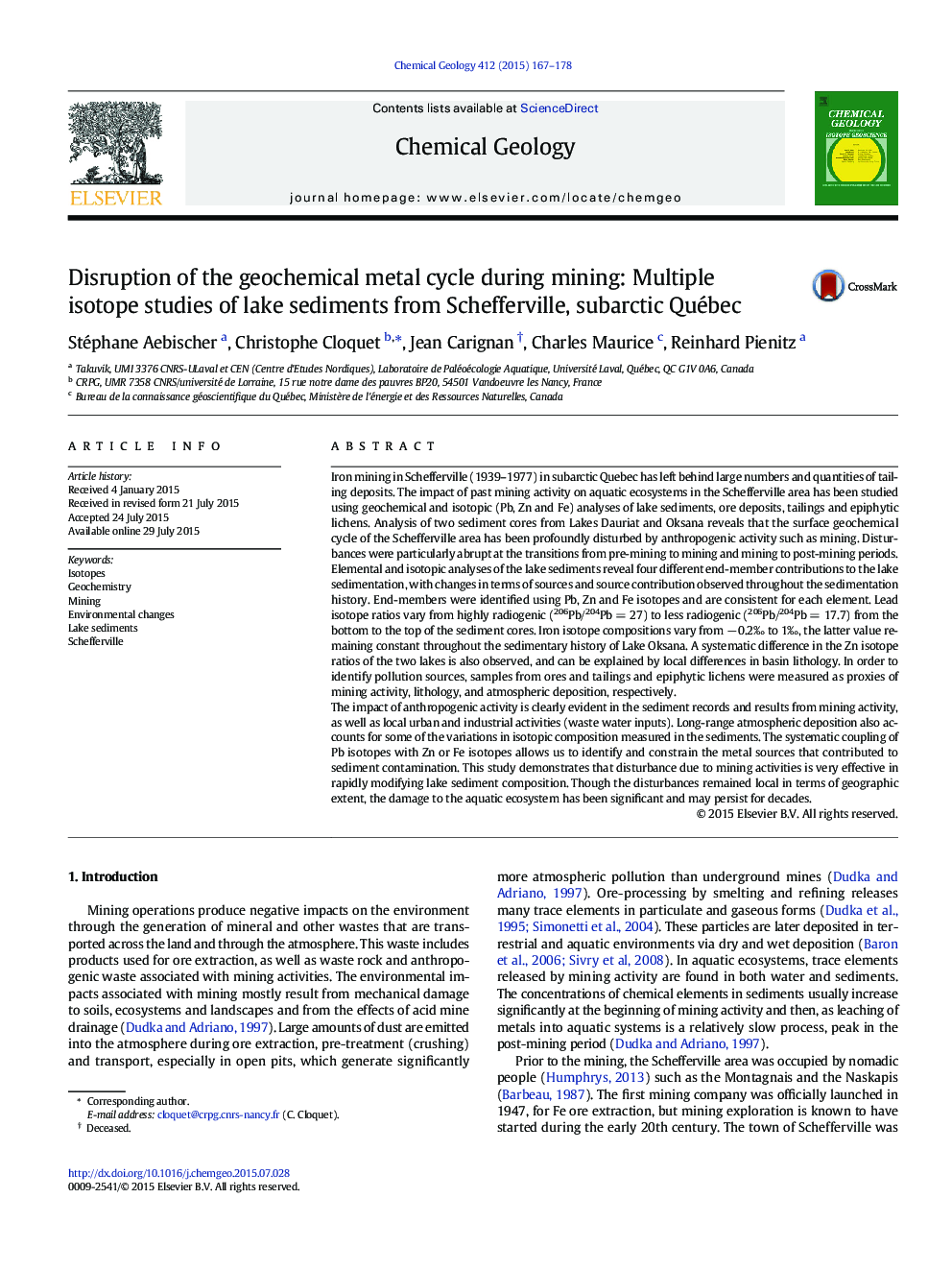| کد مقاله | کد نشریه | سال انتشار | مقاله انگلیسی | نسخه تمام متن |
|---|---|---|---|---|
| 4698431 | 1637562 | 2015 | 12 صفحه PDF | دانلود رایگان |

• Mining activity impact on subarctic environment is studied.
• Sedimentation sources evolve through time with various anthropogenic sources.
• Lead, zinc and iron isotopes are used to identify source contributions.
• Multi-isotope system coupling is efficient to better identify sources to lake sedimentation.
Iron mining in Schefferville (1939–1977) in subarctic Quebec has left behind large numbers and quantities of tailing deposits. The impact of past mining activity on aquatic ecosystems in the Schefferville area has been studied using geochemical and isotopic (Pb, Zn and Fe) analyses of lake sediments, ore deposits, tailings and epiphytic lichens. Analysis of two sediment cores from Lakes Dauriat and Oksana reveals that the surface geochemical cycle of the Schefferville area has been profoundly disturbed by anthropogenic activity such as mining. Disturbances were particularly abrupt at the transitions from pre-mining to mining and mining to post-mining periods.Elemental and isotopic analyses of the lake sediments reveal four different end-member contributions to the lake sedimentation, with changes in terms of sources and source contribution observed throughout the sedimentation history. End-members were identified using Pb, Zn and Fe isotopes and are consistent for each element. Lead isotope ratios vary from highly radiogenic (206Pb/204Pb = 27) to less radiogenic (206Pb/204Pb = 17.7) from the bottom to the top of the sediment cores. Iron isotope compositions vary from − 0.2‰ to 1‰, the latter value remaining constant throughout the sedimentary history of Lake Oksana. A systematic difference in the Zn isotope ratios of the two lakes is also observed, and can be explained by local differences in basin lithology. In order to identify pollution sources, samples from ores and tailings and epiphytic lichens were measured as proxies of mining activity, lithology, and atmospheric deposition, respectively.The impact of anthropogenic activity is clearly evident in the sediment records and results from mining activity, as well as local urban and industrial activities (waste water inputs). Long-range atmospheric deposition also accounts for some of the variations in isotopic composition measured in the sediments. The systematic coupling of Pb isotopes with Zn or Fe isotopes allows us to identify and constrain the metal sources that contributed to sediment contamination. This study demonstrates that disturbance due to mining activities is very effective in rapidly modifying lake sediment composition. Though the disturbances remained local in terms of geographic extent, the damage to the aquatic ecosystem has been significant and may persist for decades.
Figure optionsDownload as PowerPoint slide
Journal: Chemical Geology - Volume 412, 27 September 2015, Pages 167–178